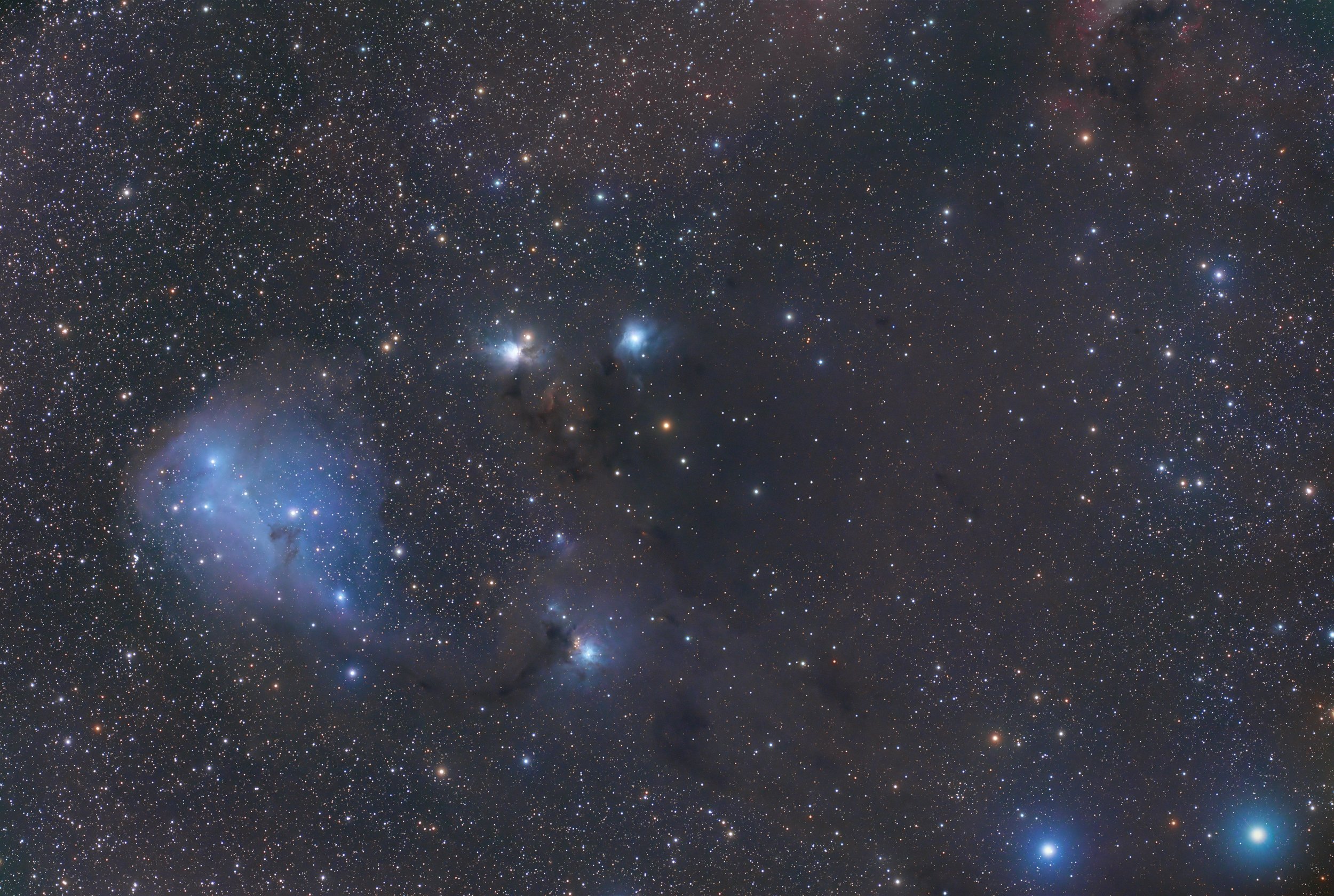
AAPOD2 Image Archives
Sort 2025 By Month: January | February | March | April | May | June | July | August | September | October | November | December
A deep view into the "Ghost of Cassiopeia"
Deep in the constellation Cassiopeia, a spectral figure haunts the night sky: the aptly named Ghost of Cassiopeia. This striking nebula, cataloged as IC 63, is located about 550 light-years away, in the cosmic backyard of the bright star Gamma Cassiopeiae.
The Ghost's ethereal glow is the result of radiation from Gamma Cassiopeiae, an unstable B-class star that shines thousands of times brighter than the Sun. This radiation energizes the surrounding hydrogen gas, causing it to fluoresce in a reddish hue typical of H-alpha emissions. Meanwhile, the nebula's bluish wisps are created by interstellar dust reflecting Gamma Cassiopeiae's intense starlight, giving it a haunting, ghost-like appearance.
IC 63 is a reflection-emission nebula, where both processes—light reflection and gas ionization—occur in tandem. Its structure is shaped by stellar winds and radiation pressure, carving out delicate tendrils and intricate layers in the interstellar medium.
This nebula is not merely a visual delight but also a dynamic region, where the effects of stellar radiation sculpt the surrounding environment. While its ghostly appearance makes IC 63 a popular astrophotography target, its proximity and interaction with Gamma Cassiopeiae offer astronomers insights into the interplay between massive stars and their surrounding gas clouds.
Under dark skies and with the right equipment, the Ghost of Cassiopeia can be revealed in all its spectral glory, a haunting reminder of the transient beauty of the cosmos.
IC 59 and IC 63 - Ghost of Cassiopeia
IC 59 and IC 63, collectively known as the Ghost of Cassiopeia, are a pair of faint reflection nebulae situated in the constellation Cassiopeia. These nebulae are primarily illuminated by the light of Gamma Cassiopeiae, a variable star with a powerful stellar wind. IC 59 and IC 63 owe their ghostly appearance to the scattering of starlight by dust particles in the interstellar medium, giving them a wispy and ethereal aspect.



